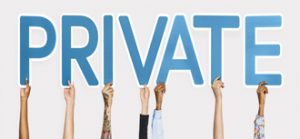So, you’re part of a non-profit in need of a capital infusion. You’re in the market for a loan but you don’t know where to begin. Can a non-profit get a small business loan? What are the terms likely to be? Is it a responsible course of action? Read on for some quick tips on how, when, and why to get a small business loan as a non-profit organization.
Summary
Questions to Ask
A non-profit should think of a loan the same way a carpenter thinks of a hammer: a tool designed for specific kinds of jobs. Like any other business, non-profits have cash flow requirements and may not have access to any further government or corporate grants. Sometimes, despite solid fundamentals, cash flow gets tricky due to the timing of receipts and expenses. Or, maybe an opportunity for significant revenue and community development presents itself but it requires initial funding that the non-profit simply doesn’t have the financing available.
In these cases, non-profits should give serious thought to taking a loan. But how should they go about getting one? And how can they tell if the terms are acceptable?
Loan or Credit Line
 First, a preliminary consideration. Should you get a loan or a revolving line of credit?
First, a preliminary consideration. Should you get a loan or a revolving line of credit?
Loans are typically for large, one-time expenses. They provide fixed terms and certainty for borrowers who require a single injection of capital to realize additional revenue or growth.
On the other hand, credit lines are much more versatile. They are frequently used by businesses that require flexibility to meet foreseen or unforeseen expenses when timing or capital requirements don’t quite line up with available funding. For example, a non-profit that must make payroll on the first of the month but doesn’t realize operating revenue until the 15th may require a credit line.
Companies, both for-profit and non-profit, frequently keep a backup line of credit in place for unexpected cashflow problems or timing issues. When the balance is kept at zero, there are typically no fees or interest charged so the additional safety comes at virtually no cost.
When?
 When should a non-profit take out a loan or credit line? Again, this depends on the nature and purpose of the funding being advanced. A loan should be taken out shortly before the anticipated large expense is due. There’s no sense in taking on the debt too far in advance because of the additional interest incurred.
When should a non-profit take out a loan or credit line? Again, this depends on the nature and purpose of the funding being advanced. A loan should be taken out shortly before the anticipated large expense is due. There’s no sense in taking on the debt too far in advance because of the additional interest incurred.
The best time to open a line of credit is usually well before any cashflow problems or expenses arise. In other words, the best time to open a line of credit is as soon as possible so that you have a cash backup plan. Because the costs of opening a nonprofit line of credit and leaving the balance at zero are zero, there is virtually no downside to opening one ahead of time.
If a non-profit wait until the need for a credit line is immediate, they are likely to find themselves in a situation where there isn’t enough time to open the line and access the funds without creating inconveniences. It’s much better to open the credit line as soon as possible, leave it untouched until the need arises, access it only as needed, and pay it off as soon as possible. This approach minimizes inconvenience, fees or interest payments, and related costs.
Terms
 The terms under which the non-profit takes out a line of credit or a loan are acceptable or unacceptable based entirely on individual financial circumstances. As with any loan in any business, the non-profit has to carefully consider the potential return and risk associated with taking out the loan or credit line. At a minimum, the non-profit needs to assure itself that it can realistically pay back the interest and principal on the schedule set by the lender. It should also ensure that taking on the debt will not have a large impact on its risk profile, degrading its ability to carry out its mission in the community.
The terms under which the non-profit takes out a line of credit or a loan are acceptable or unacceptable based entirely on individual financial circumstances. As with any loan in any business, the non-profit has to carefully consider the potential return and risk associated with taking out the loan or credit line. At a minimum, the non-profit needs to assure itself that it can realistically pay back the interest and principal on the schedule set by the lender. It should also ensure that taking on the debt will not have a large impact on its risk profile, degrading its ability to carry out its mission in the community.
Lenders
There are several options available to non-profits. But first, a brief note about one option that is not available.
The Small Business Administration
The Small Business Administration (SBA) is an American governmental organization dedicated to helping small businesses grow and flourish. They are a fantastic resource for millions of small businesses across the country looking for financing, advice, and other forms of assistance. Unfortunately, as discussed in a previous article about non-profits and SBA loans, SBA loans are not available to non-profit organizations.
Private Sector Lenders
 There are countless lenders in the private sector space that are willing to issue small-business loans. Unfortunately, there are significantly fewer who will lend to a non-profit. This isn’t due to any inherent undesirability of non-profit holding debt. Many lenders, especially smaller ones, simply lack the expertise necessary to lend to non-profits. They exhibit unique behaviors, structures, and cash flow patterns that some lenders find difficult to assess for risk.
There are countless lenders in the private sector space that are willing to issue small-business loans. Unfortunately, there are significantly fewer who will lend to a non-profit. This isn’t due to any inherent undesirability of non-profit holding debt. Many lenders, especially smaller ones, simply lack the expertise necessary to lend to non-profits. They exhibit unique behaviors, structures, and cash flow patterns that some lenders find difficult to assess for risk.
For this reason, non-profits have more luck if they focus on those lenders who already devote a significant portion of their business to lending to non-profit businesses. The lender is much more knowledgeable and more amenable to the idea of lending to a non-profit.
Financing Solutions
Financing Solutions, a leading provider of business loans for nonprofits in the form of a 501c3/not-for-profit line of credit, is just such a company. With a dedicated service line focused on lending to non-profits, Financing Solutions understands and respects their unique needs. Financing Solutions has a highly flexible line-of-credit offering that costs nothing to set up and can help bring cash-flow flexibility to all types of non-profits. Don’t wait until you’re in desperate need of credit. The best time to get that line of credit is now so that you have the tools you need to address any unforeseen circumstances.




